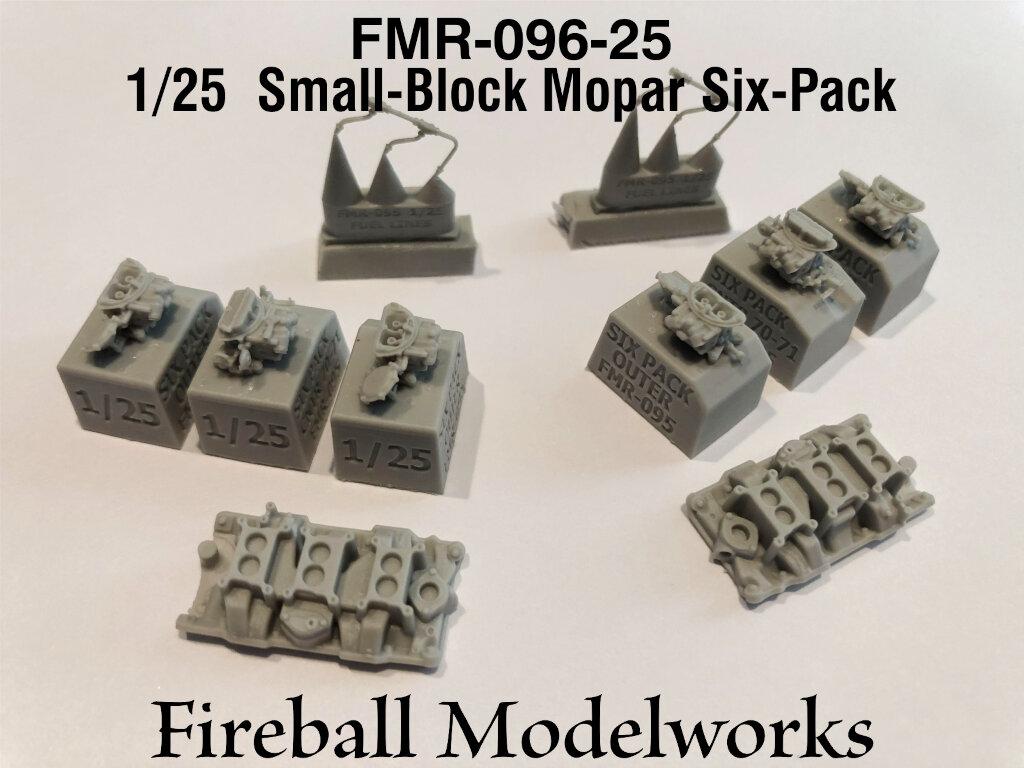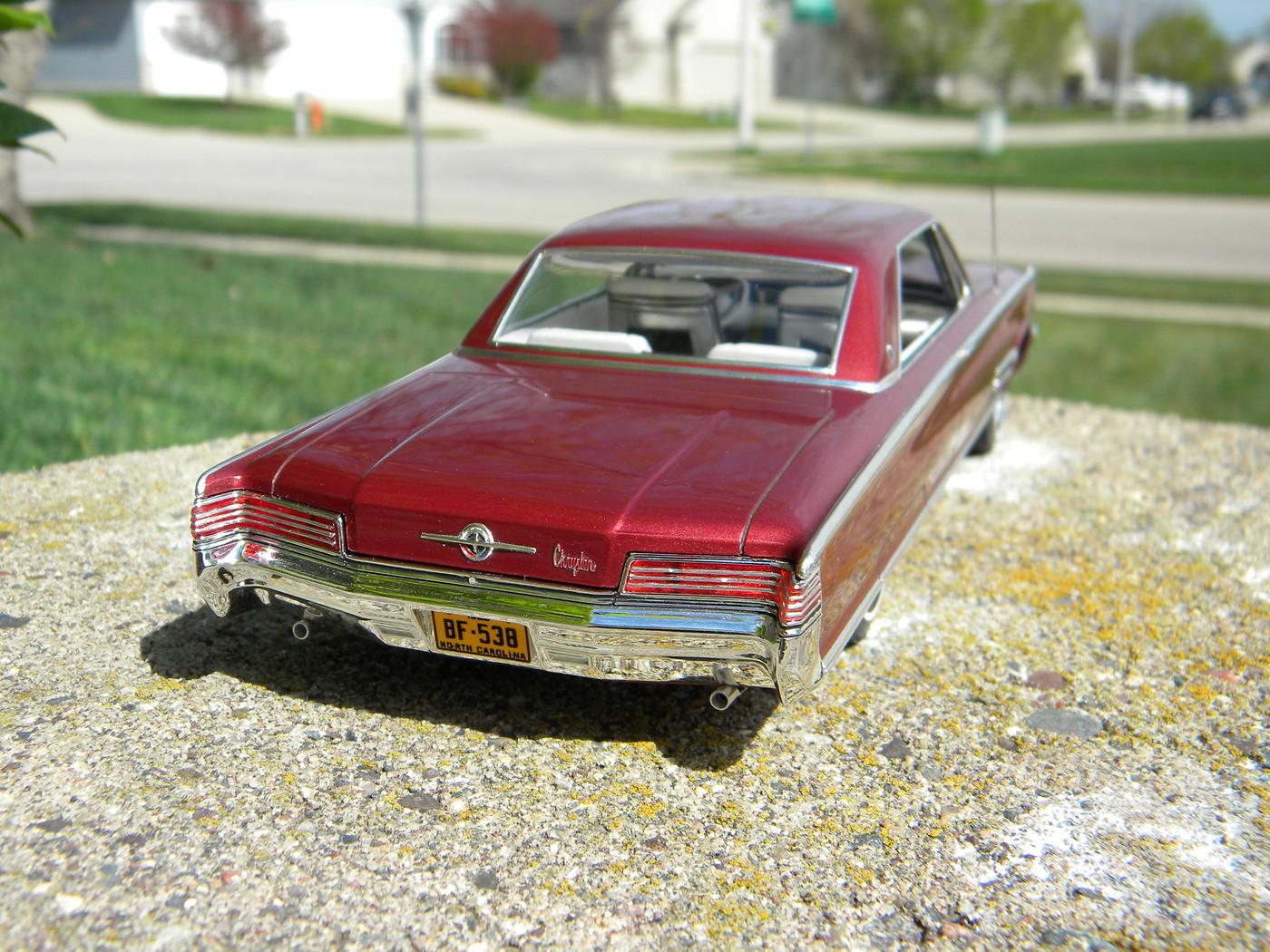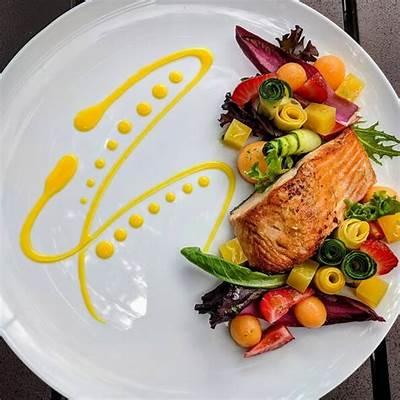-
Posts
15,071 -
Joined
-
Last visited
Content Type
Profiles
Forums
Events
Gallery
Everything posted by StevenGuthmiller
-

Old glue bomb kit, what went wrong?
StevenGuthmiller replied to kymdlr's topic in Model Building Questions and Answers
I agree. I never want to put myself into a situation where I’m not certain what the outcome might be, especially if you’re dealing with a rare vintage kit. I’m not about to have my model, or any part of it, be a guinea pig. Steve -

Old glue bomb kit, what went wrong?
StevenGuthmiller replied to kymdlr's topic in Model Building Questions and Answers
Yup. I’ve heard this before. That’s why I don’t use it. Steve -
Another thing that they all have in common is sub-par durability. I would gladly pay $50.00 or $60.00 for a product that looked reasonably close to chrome, and exhibited the same durability as a cured lacquer paint. Apparently, that’s not possible or somebody would have done it by now. Steve
-

Inspiration Sources
StevenGuthmiller replied to iBorg's topic in General Automotive Talk (Trucks and Cars)
Nothing more than the joy and excitement that I used to feel as a kid, seeing what I saw driving down the street! Never read any magazines or got into racing, or customs, or hot rods, or foreign exotics, because they weren’t anything that I saw just cruising up and down Main Street in my small upper midwestern town when I was young. Steve -

What Did You Have for Dinner?
StevenGuthmiller replied to StevenGuthmiller's topic in The Off-Topic Lounge
Finally, our New Years meal. Shrimp Coctail, Coconut Shrimp with Sweet Chili-Soy dipping sauce, Buttered Rice with Golden Raisins, and Steamed, Buttered Vegetables. Steve -

What Did You Have for Dinner?
StevenGuthmiller replied to StevenGuthmiller's topic in The Off-Topic Lounge
My very first attempt at making Tamales was a success! I've had at least a few tamales in my life, but never any this flavorful! Of course the masa was prepared with lard and stock, and the chicken was poached in stock as well. Then the chicken was shredded and folded with a sauce consisting of tomato sauce, garlic and onion powder, cumin, oregano, wine vinegar, and a little honey. The "serving sauce" is a blended combination of Ancho and Pasilla chilies, onion, garlic, cumin, Mexican oregano, chicken stock, and a little honey. Served with the sauce, a little chopped cilantro, and a squeeze of lime. Delicious!! Steve -

What Did You Have for Dinner?
StevenGuthmiller replied to StevenGuthmiller's topic in The Off-Topic Lounge
Our Christmas meal this year consisted of Shrimp Cocktail, Garlic Shrimp Scampi, Bacon Wrapped Shrimp with an Asian "Sticky Sauce", Lobster Tails, and Dungeness Crab. Steve -
Sure, there are always possibilities, but luck is the main factor. I've had much more luck finding pretty good deals on eBay and in years past than I have had anywhere else in recent memory, but unfortunately, at least for me, those years have passed. The only chance that I can remember having in an antique store in the past 10 years of finding a true gem was when I happened upon a still sealed 1967 Barracuda in one of the many antique stores in Stillwater Minnesota for I believe around $150.00. I passed on it partially because I was somewhat strapped for cash at the time, and partially because it was sealed in cellophane, and I had no idea of what the contents really were. My suggestion if anyone wants to find that elusive gem in an antique store would be to check the small, lightly trafficked, out of the way places versus the large heavily trafficked places that encounter possibly hundreds of thousands of visitors a year. They of course will have much less inventory to look through, but they will probably be more likely to retain any of those hidden jewels for a longer time. Steve
-
A lot of people are suggesting to check out antique stores, model shows, etc, and yes they are certainly worth checking out. That said, what I've found in recent years is that in the circumstance of antique stores or flea markets and that sort of thing, is in general, those people are not idiots. They are accustomed to finding and knowing the value of things, and if anything, I often find antique store prices greatly inflated, or at least no better than what you'll find anywhere else. Not only that, but there is enough of a market out there for vintage kits, and enough people looking for them, that if anything does turn up on a antique store's shelves, it's not there long. I have had some very good luck 20 to 30 years ago or more, with finding truly rare models in antique establishments for actually bargain basement prices. Got an AMT 1958 Pontiac Bonneville convertible and a 1960 Lincoln Continental convertible for $8.50 each one time. Found a complete, AMT, in the box, 1962 Chevy Apache pickup for $25.00 at another place, and a derelict AMT 1964 Pontiac Lemans convertible at another for less than $20.00, but that's about the extent of my luck over the years. It's not like that anymore, unless you just get lucky enough to stumble upon someone who just really has no clue. Today, about the only thing I see in these types of places are either stuff that I suppose you could technically call vintage, but that you can still order from Model Roundup, The occasional 1964 Ford promo for $200.00, or things that I have no interest in and am loath to spend $50.00 on. Last time I visited the several large antique stores that we visit on a trip every year, the only thing I found was a couple of older kits of subjects that are either still currently available, or fairly recently out of production with a strong likelihood that they will return. That, and a Revell kit of a sand worm from the movie Dune. Now what the hell would I do with that?! Steve
-
Unfortunately for anybody who’s looking to branch out into vintage kits, your just a little too late. I bought most of the rare vintage kits that I have back in the 2000’s-2010’s, almost all of them on aBay. You could still find good deals back then, but the prices have gone completely crazy since. Most of the kits that I have in my collection were acquired for somewhere in the neighborhood of $50.00 to $120.00, some more, some less. That said, being a builder and not a collector, my kits were bought to be built, so a good number of them were built rebuilders, incomplete or junk yard finds. Just as an example, my last project, (my ‘64 Bonneville project) was bought in bits and pieces from 3 different models, and combined to create one model. A broken hardtop with missing parts for the bumpers and hubcaps, a customized convertible for the hood and interior. And a pristine convertible body. Pretty sure I didn’t pay more than $25.00 to $30.00 for each one, and what I didn’t use was traded off. But sadly, even that’s becoming more difficult to do as even vintage parts are becoming more difficult to find, as well as much more expensive. The market is what it is, and at the moment, pristine unbuilt kits are going for a premium, so if you want to find stuff cheap, you’re either going to have to get lucky, or find what might appear to be basket cases and restore them. You might have seen the lot of 17 vintage kits that I was trying to help move for someone a couple of weeks ago. In that circumstance, the seller was asking a price for the entire lot that I felt was fair, or at a minimum, close to fair, considering some of the subject matter. I had possibly a dozen inquiries, but no takers. I don’t know what the reason for that is, but I suspect that it has to do with the huge chasm regarding value that seems to exist between someone who is a collector and willing to pay top dollar, and the builder or flipper that hopes to get everything for almost nothing. There no longer seems to be much of a middle. Steve
-

413 Mopar engine.
StevenGuthmiller replied to lordairgtar's topic in Model Building Questions and Answers
In all honesty, regardless of whether or not there are 2 extra bolts on the valve covers, I would go with whichever engine is the most detailed. I don't think most people are going to be counting valve cover bolts. Just what I would do anyway. If it is an issue for you, you can always do a little kit bashing and swap valve covers. That said, there's nothing wrong with the Lindberg '64 Plymouth/Dodge engines. If I remember correctly, that's the engine that I used in my '65 Fury build, with some modification of an intake from a Johan kit. Steve -

413 Mopar engine.
StevenGuthmiller replied to lordairgtar's topic in Model Building Questions and Answers
Pretty much any big block Mopar engine from whatever kit is going to be a fair representation. The overall appearance between a 440, 426, 413, 383, etc, doesn’t change a whole lot, with of course the exception of the Hemi, and the various intakes. Steve -
It doesn't need to be confusing. Just pick up a can of hardware store lacquer thinner, (it'll set you back all of about $5.00) and mix it about 50/50 with your paint. Should look about the consistency of whole milk. Run a little through your airbrush to see if it sprays the way you want it too prior to doing the actual painting. If not, add a little more thinner at a time until it sprays how you want it to. Seriously, it's not rocket science, and all that you're going to gain is a headache if you make it any more complicated than it needs to be. Steve
-
Like any of these EV pickups are ever going to see any off road duty! 😄 Steve
-

Model building on youtube.
StevenGuthmiller replied to Force's topic in Model Building Questions and Answers
Well, the number of followers is hardly an indication of doing something useful. Social media is full of weirdos, creeps and losers with hundreds of thousands of followers. (not to say that he's a creep or loser) But I guess in today's society, "followers" are becoming the ultimate measure of success. Steve -

Model building on youtube.
StevenGuthmiller replied to Force's topic in Model Building Questions and Answers
Is that what that is? I was completely stumped! Steve -

Model building on youtube.
StevenGuthmiller replied to Force's topic in Model Building Questions and Answers
And it’s my opinion that true inspiration comes from viewing something that makes you say, “Wow, I want to learn how to do that”, and not so much from seeing something that everybody else and his dog can do with little effort or talent. This makes me want to learn how to up my culinary game. This on the other hand, inspires me to maybe make a trip to the restroom. You can call it lazy, or just uninspired. Depends on how you see things. And just for the record, I wasn’t referring to any individual or group of people as lazy. I said people in general and by nature tend to be lazy or to take the easy route. I still stand by that. Steve







